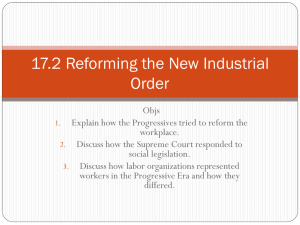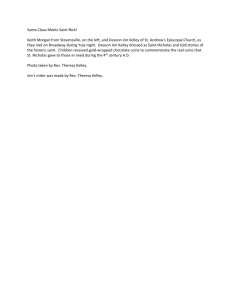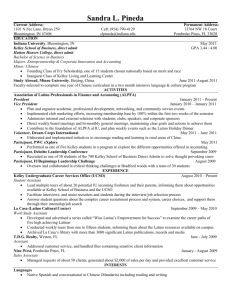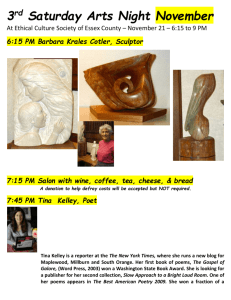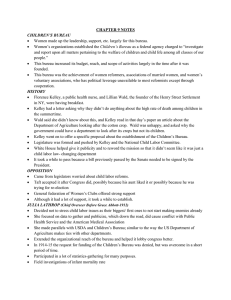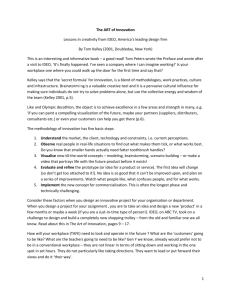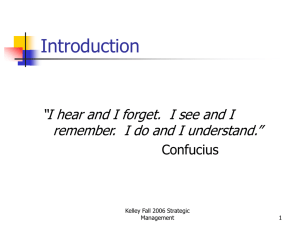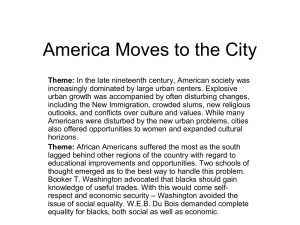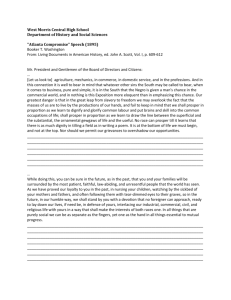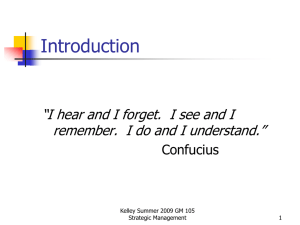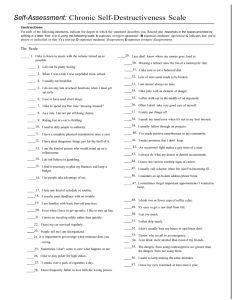Child Labor Notes - Pascack Valley Regional School District
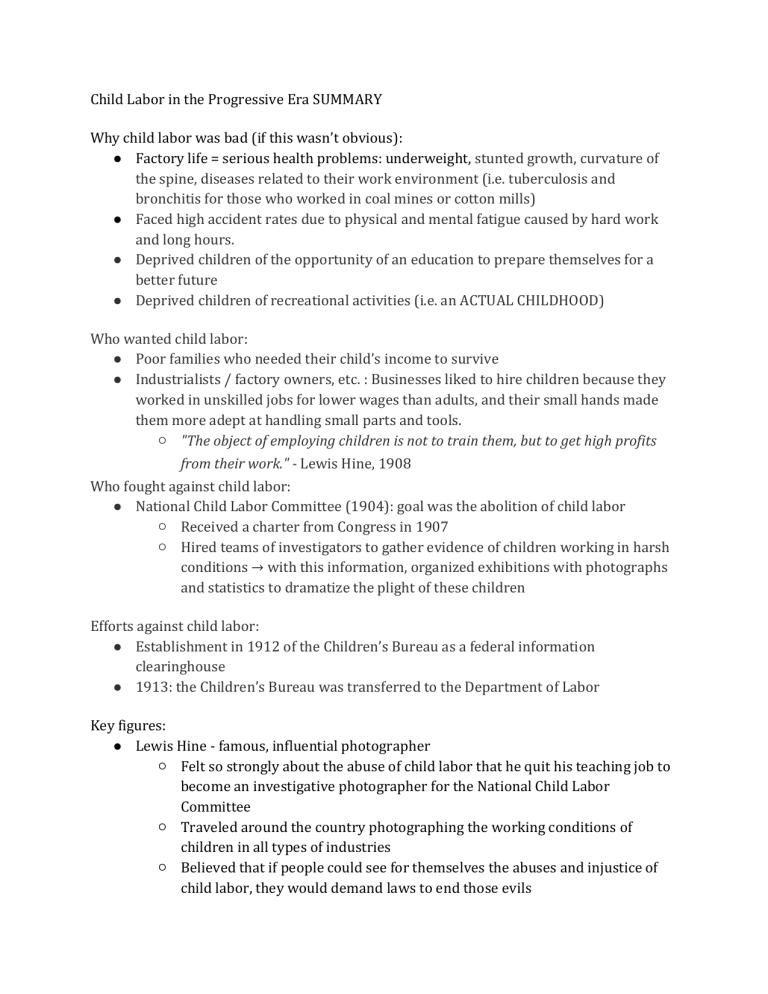
Child Labor in the Progressive Era SUMMARY
Why child labor was bad (if this wasn’t obvious):
● Factory life = serious health problems: underweight, stunted growth, curvature of the spine, diseases related to their work environment (i.e. tuberculosis and bronchitis for those who worked in coal mines or cotton mills)
● Faced high accident rates due to physical and mental fatigue caused by hard work and long hours.
● Deprived children of the opportunity of an education to prepare themselves for a better future
● Deprived children of recreational activities (i.e. an ACTUAL CHILDHOOD)
Who wanted child labor:
● Poor families who needed their child’s income to survive
● Industrialists / factory owners, etc. : Businesses liked to hire children because they worked in unskilled jobs for lower wages than adults, and their small hands made them more adept at handling small parts and tools.
○ "The object of employing children is not to train them, but to get high profits
from their work." - Lewis Hine, 1908
Who fought against child labor:
● National Child Labor Committee (1904): goal was the abolition of child labor
○ Received a charter from Congress in 1907
○ Hired teams of investigators to gather evidence of children working in harsh conditions → with this information, organized exhibitions with photographs and statistics to dramatize the plight of these children
Efforts against child labor:
● Establishment in 1912 of the Children’s Bureau as a federal information clearinghouse
● 1913: the Children’s Bureau was transferred to the Department of Labor
Key figures:
● Lewis Hine - famous, influential photographer
○ Felt so strongly about the abuse of child labor that he quit his teaching job to become an investigative photographer for the National Child Labor
Committee
○ Traveled around the country photographing the working conditions of children in all types of industries
○ Believed that if people could see for themselves the abuses and injustice of child labor, they would demand laws to end those evils
○
● National Consumers League
○ Under the direction of its first general secretary (Florence Kelley) the NCL exposed child labor and other scandalous working conditions
○ Kelley was to become one of the most influential and effective social reformers of the 20th century. During the early 1900s, she led the League in its efforts to:
●
●
●
●
● issue a White Label designating products made under fair working conditions protect in-home workers, often including whole families, from terrible exploitation by employers promote the Meat Inspection Act of 1904 and the Pure Food and Drugs Act of 1906 write and then champion state minimum wage laws for women defend and ultimately convince the US Supreme Court to uphold a 10-hour
●
● work day law in the landmark Muller v. Oregon case of 1908 advocate for creation of a federal Children's Bureau and federal child labor restrictions
Florence Kelley
● Organized more than 60 chapters of the league, which used consumer pressure to ensure that products were manufactured and marketed under safe conditions, thus monitoring the products of sweatshops
● Assisted in founding the Federal Children’s Bureau in 1912 and remained a member until death
● Her legacy: establishing a minimum wage, setting maximum working hours, working for laws to protect women and children from unsafe working conditions, and authoring most of the child labor laws
● Mother Jones - fearless fighter for workers’ rights—once labeled "the most dangerous woman in America" by a U.S. district attorney
○ Radical for her time: welcomed African American workers and involved women and children in strikes
○ Advocated for miners and children
■ During a silk strike in Philadelphia, 100,000 workers—including
16,000 children—left their jobs over a demand that their workweek be cut from 60 to 55 hours
■ To attract attention to the cause of abolishing child labor, in 1903, she led a children’s march of 100 children from the textile mills of
Philadelphia to New York City "to show the New York millionaires our grievances."
■ She led the children all the way to President Theodore Roosevelt’s
Long Island home.
○ “I’m not a humanitarian, I’m a hell-raiser.”
○ She helped coordinate major strikes, some advocating the elimination of child labor, and cofounded the Industrial Workers of the World.
Results of efforts:
● State Level
○ 1836---Union members at the National Trades’ Union Convention make the first formal, public proposal recommending that states establish minimum ages for factory work
● 1836--First state Child labor law--Massachusetts requires children under
15 working in factories to attend school at least 3 months/year, and….
● 1842---Massachussettes limited the work day for children to 10 hrs max
● Other States started passing these laws restricting Child labor, but they were not consistently enforced, and there were not enough states
involved. This prompted reformers to work towards federal laws:
● 1916: Congress passed the **Keating-Owens Act that established the following child labor standards:
○ A minimum age of 14 for workers in manufacturing and 16 for workers in mining
○ A maximum workday of 8 hours
○ Prohibition of night work for workers under age 16
○ A documentary proof of age.
**This law was later ruled unconstitutional on the ground that congressional power to regulate interstate commerce did not extend to the conditions of labor
How effective was child labor reform during the Progressive Error? NOT THAT EFFECTIVE:
● Effective action against child labor had to await the New Deal
○ Reformers, however, did succeed in forcing legislation at the state level banning child labor and setting maximum hours (Although many of these laws were not consistently enforced)
○ By 1920 the number of child laborers was cut to nearly half of what it had been in 1910
Educational Reform 1900’s-1930’s
● educators saw that they could use schools to prepare children for their place in society
● Ways in which school changed
1. Educators extended school to a larger proportion of children
2. Schools expanded and differentiated their curricula
3. Educators looked to use schools to solve social and economic problems
4. Schools individualized programs
● the amount of children attended schools increased greatly
● even in the number of high school students increased
● State Legislatures passed compulsory education laws
● in the years to come, many states would pass laws that required education to at least up to 14 years old
● High school became more valuable and was used as a path to a career
○ it prepared students for jobs immediately
○ many jobs began to desire and require high school education
● Schools used to only offer basic classes, but began to expand to different levels to prepare students for college
● Education became more of a requirement instead of the privilege it once was
John Dewey and his role in education
● was a teacher and philosopher
● popularized pragmatism: teaching through application
● helped popularize the idea of using school and education to be a means of bettering society
● believed in nurturing the social, intellectual, aesthetic growth of individuals
● He reimagined the learning process
● defined the role of a teacher
● pioneered education for children
Good video: http://www.youtube.com/watch?v=_t-9ORCu6zw
Good Links: http://www.nclnet.org/about-ncl/history http://stopchildlabor.org/ - child labor still exists today around the world!
Works Cited
"Dewey, John." American History Online. Facts on File, n.d. Web. 8 Oct. 2013.
< http://www.fofweb.com/NuHistory/LowerFrame.asp?iPin=EAHVII064&InputText=john
+dewey&SearchStyle=Keyword&dTitle=Dewey%2C+John&iRecordType=&TabRecordType
=AllRecords&TribeName=&TribeCodeSearch=&dCultureArea=&AllCountPass=197&SubBi oCountPass=187&BioCountPass=111&SubCountPass=76&DocCountPass=9&ImgCountPas s=0&MapCountPass=1&RecPosition=1 >.
"education, 1890–1930." American History Online. Facts on File, n.d. Web. 8 Oct. 2013.
< http://www.fofweb.com/NuHistory/LowerFrame.asp?iPin=EAHVII071&InputText=%22 education+1890+1930%22&SearchStyle=&dTitle=education%2C+1890%26%23150%3B
1930&iRecordType=&TabRecordType=AllRecords&TribeName=&TribeCodeSearch=&dCul tureArea=&AllCountPass=1&SubBioCountPass=1&BioCountPass=0&SubCountPass=1&Doc
CountPass=0&ImgCountPass=0&MapCountPass=0&RecPosition=1 >.
"Kelley, Florence." American History Online. Facts on File, n.d. Web. 8 Oct. 2013.
< http://www.fofweb.com/NuHistory/LowerFrame.asp?iPin=WLA075&InputText=Florenc e+Kelley&SearchStyle=Keyword&dTitle=Kelley%2C+Florence&iRecordType=&TabRecord
Type=AllRecords&TribeName=&TribeCodeSearch=&dCultureArea=&AllCountPass=41&Su bBioCountPass=37&BioCountPass=14&SubCountPass=23&DocCountPass=2&ImgCountPas s=2&MapCountPass=0&RecPosition=1 >.
"Mother Jones (1837-1930)." AFL-CIO. America's Union, n.d. Web. 8 Oct. 2013.
< http://www.aflcio.org/About/Our-History/Key-People-in-Labor-History/Mother-Jones-
1837-1930 >.
